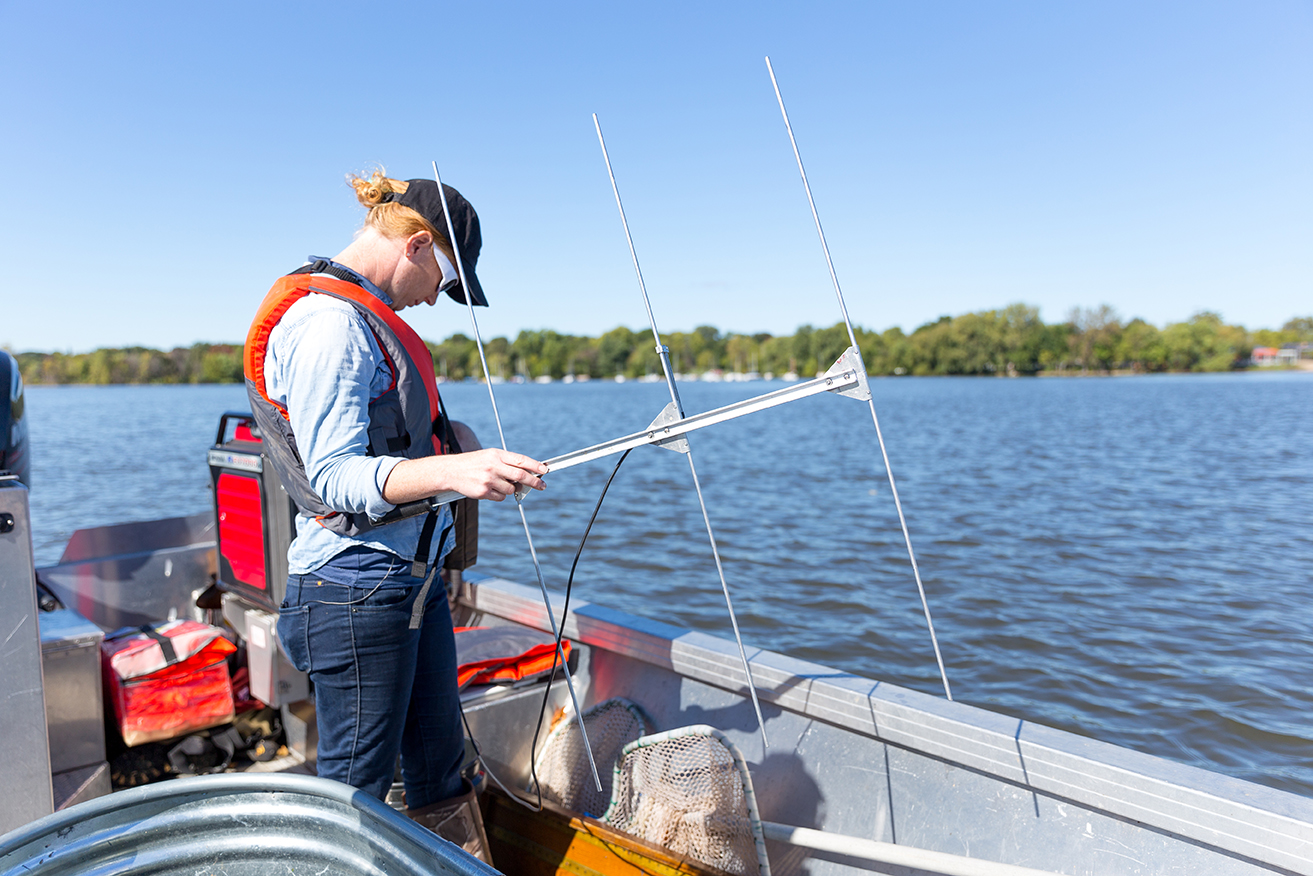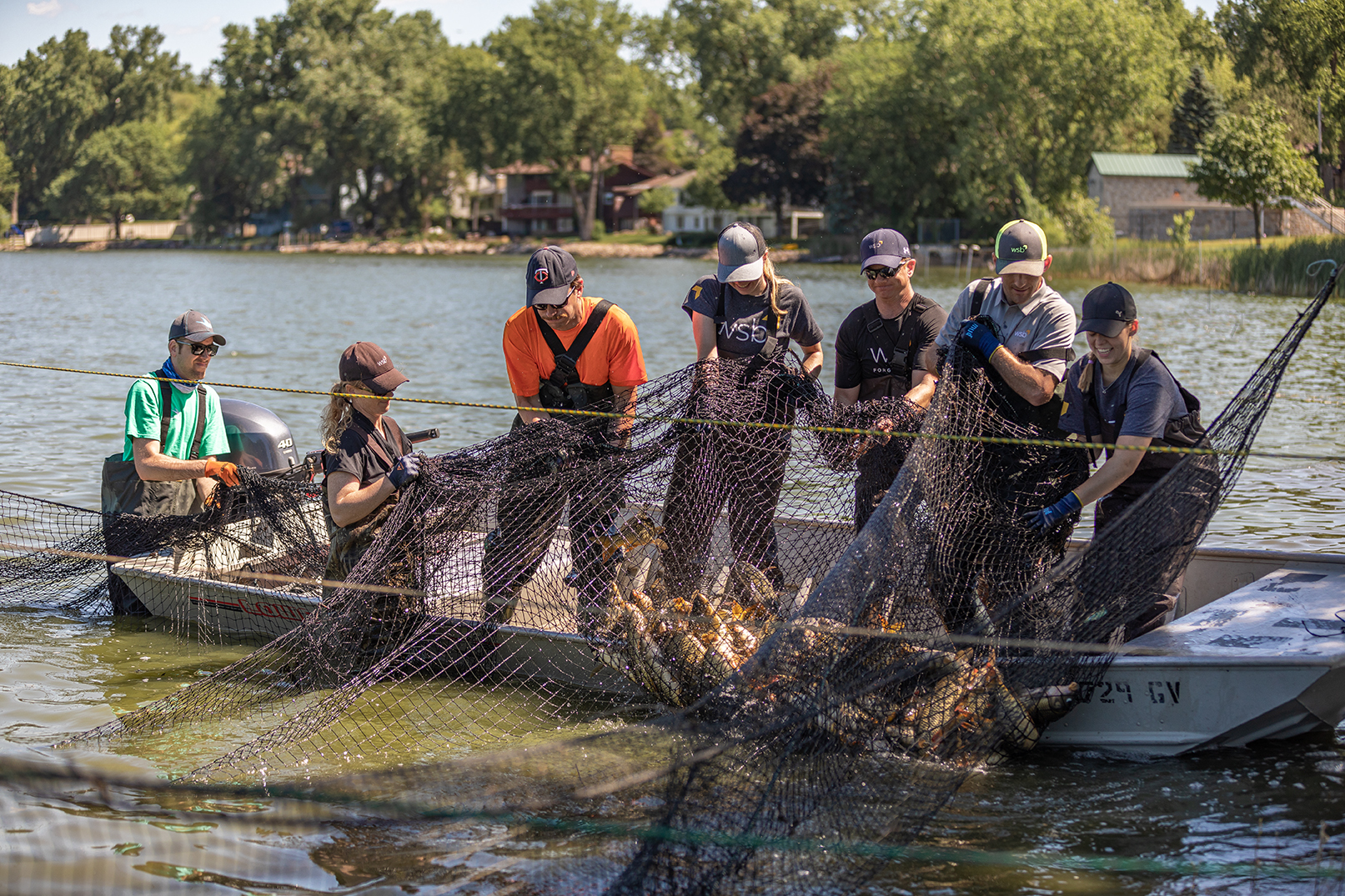Aquatic Invasive Species (AIS) are behind some of the most drastic changes to freshwater systems in the world today. They are driving changes in the ecology and water quality of many bodies of water across the United States and every year more cities, states, and local programs act to preserve their local resources.
We partner with these and other stakeholder groups to prevent the spread of invasive species and act to manage or remove those whose populations are already established. We lead the field of invasive fish management, specifically carp and other rough fish.
The first step to managing invasive species like common carp is to gather baseline data. WSB uses electrofishing surveys to quickly gather information on carp quantities, size structure, distribution, and biomass density in a lake or watershed. These studies can be performed on any sized body of water, from neighborhood ponds to hundreds or thousands of acres. This method is a cost-effective way to determine if the carp are causing significant damage to the natural ecology and health of the lake. From there we study movement patterns, reproductive history, and test adult carp removal options. Electrofishing surveys are a standard scientific methodology and are widely accepted by state and federal management agencies. This video shows how we do it.

If initial data collection suggests a lake has an overabundance of carp that are creating damage, WSB will develop an Integrated Pest Management (IPM) Plan. All cases will include some level of adult carp removal. Removal methods may include commercial fishing (large scale nets), stream trapping, and baited box net trapping. The video below shows our team using baited box netting. This method is best used on a small to moderate lake that has obstacles on the lake bottom preventing commercial nets from being successful. Box netting is a common method used on carp and goldfish, it can be scaled to meet the exact demands of your lake, and can be run with a small crew. Multiple traps can be run concurrently resulting removing large quantities of fish.

Our teams of experts work together to seamlessly deliver innovative and ground-breaking service. Learn about each of our groups.
We partner with our clients and communities to build what’s next in infrastructure—the places, spaces and systems that support our lives.